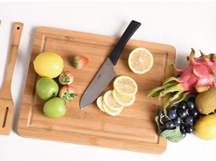Summer term 6
English
- Talk for Writing packs to be released fortnightly.
- All packs will be on the school website.
- Each pack is roughly 2 weeks worth of work.
- Pupils in a mixed class, please feel free to look at both stories if you wish to.
| Reception/ Year 1 |
Reception are to work their way through ‘Mouse’s Adventure’ : download here w/c 15/6: R-Maxs-Jungle Y1s are to work their way through ‘Sayeeda, the Pirate Princess’ : download here w/c 15/6: Y1-Brian-Bear |
| Year 2 | Y2s are to work their way through ‘Rainbows, rainbows everywhere!’ : download here w/c 15/6: Y2-Superheroes |
| Year 3/4 | Y3s are to work their way through ‘Journey to the Jungle!’ : download here w/c 15/6: Y3-Lockdown-1 Y4s are to work their way through ‘Mission Possible’ : download here w/c 15/6: Y4-Impossibly-Possible |
| Year 5/6 | Y5s are to work their way through ‘One Chance’ : download here w/c 15/6: Y5-Wizards Y6s are to work their way through ‘The Gadget’s Workbook’ : download here w/c 15/6: Y6-Monsters *please also remember your TED talks from previous term* TED Talks (PDF) |
| Other ideas | Pupils can:
|
Maths
- Please feel free to recap over the 4 operations – adding, subtracting, multiplying and dividing – use the Can Do Maths Workout packs
- Times tables practice https://www.timestables.co.uk/
- Continue to log on to https://www.mymaths.co.uk/
- PowerPoints will be on the school website
| Reception | Please continue to explore counting and partitioning, alongside addition and subtraction.
Counting – e.g. count things of different sizes, count things that can’t be seen e.g. sounds and actions.
Partitioning Explore a range of ways to partition a whole number by identifying the pairs of numbers that make a total. This can be done by physically separating a group, or constructing a group from two kinds of things
Addition (add, more, plus, sum, total, altogether)
Subtraction (subtract, take away, fewer, less, left)
Please see Tapestry for occasional examples of the activities mentioned above, as well as ideas and tips from school staff. |
| Year 1 |
Can Do Maths Workout 1.1, 1.2, 1.3, 1.4 KS1 Problem Solving PPT : download here There is also a set of daily lessons on the white rose website https://whiterosemaths.com/homelearning/year-1/ |
| Year 2 | The first three Powerpoints are useful revision tools-
The next workbooks also revise topics covered this year. Can Do Maths Workout 2.1, 2.2, 2.3, 2.4 http://www.buzzardpublishing.com/cando-videos – video links to support the workbooks. Some support parents with knowing how to support your child but there are also ones that support the daily lessons. The following Powerpoints are useful to get the children thinking!
https://whiterosemaths.com/homelearning/year-2/ – useful videos explaining maths concepts |
| Year 3/4 | The Can Do Maths Workouts are revision of key skills covered this year
Y3: Can Do Maths Workout 3.1, 3.2, 3.3, 3.4 Y4: Can Do Maths Workout 4.1, 4.2, 4.3, 4.4 These PowerPoints are a great mixture of problems to get you thinking!
|
| Year 5/6 | The Can Do Maths Workouts are revision of key skills covered this year
Y5: Can Do Maths Workout 5.1, 5.2, 5.3, 5.4 Y6: Can Do Maths Workout 6.1, 6.2, 6.3, 6.4 These PowerPoints are a great mixture of problems to get you thinking!
|
| Other ideas | Pupils can:
|
Foundation subjects
Please also look at the suggestions listed on the school website under the summer term 5 guidance.
| Reception/ Year 1 |
Science: Animals including humans
Design and Technology
Geography: Find out about a country of your choice
Remember, these are only suggestions. If you have any other lovely ideas, don’t forget to share them on Tapestry. We look forward to seeing what you get up to. Have fun everyone! |
| Year 2 | There are 3 new topics for Year 2 in Term 6!
DT: Design and make a healthy and tasty fruit salad
RE: What makes some places sacred to believers?
Geography: study of a non-European country (Malawi in Africa)
We will still be looking forward to your Padlet updates and emails with photos of all the brilliant “extra” ideas you have had. Don’t forget that Padlet is also a great place to get ideas from other children and from us! |
| Year 3/4 | Art – Zentangle art. How creative can you get with this project? Can we create a class display online? See the Zentangle pack (download here) and PowerPoint (download here) for more details.
Science – Why not see if you can do any of the experiments from the KS2 Science PPT (download here)? Share your results on your class Padlet. Free choice learning – Can you take inspiration from any of the websites below or one of your own choice? What could you make/do? Here are a few ideas:
https://www.zsl.org/learning-resources |
| Year 5/6 | Art – Enjoy doodling in Jon Burgerman’s style –  have a look at the PowerPoint for more information (download here). have a look at the PowerPoint for more information (download here).
or can you complete our 30 day sketch challenge (download here) or become a fashion designer (download here) every day for the next 30 days? Science – Why not see if you can do any of the experiments from the KS2 Science PPT (download here)? Share your results on your class Padlet. ICT- Choose from any of the great online lessons on the Bitesize website! https://www.bbc.co.uk/bitesize/subjects/zvnrq6f There are also plenty of fun, online activities to be found here: https://techytiles.weebly.com/ RE – Unit U2.11 Why do some people believe in God and some people not? See powerpoint, download here. Look at the statistics page and the case studies and write a discussion text about the question “Why do some people believe in God and some people not?” |
Books to help talk through the crisis
https://home.oxfordowl.co.uk/books/jon-burgerman-everybody-worries-free-ebook/?region=uk
https://m.youtube.com/watch?feature=youtu.be&v=2PnnFrPaRgY7
https://axelscheffler.com/books-for-older-children/coronavirus
https://literacytrust.org.uk/family-zone/9-12/book-hopes/
STEM opportunities
https://www.stem.org.uk/home-learning/primary
https://www.science-sparks.com/
Recommended websites
https://www.bbc.co.uk/bitesize/primary
https://classroomsecrets.co.uk/free-home-learning-packs/
https://www.ltl.org.uk/free-resources/
https://www.empathylab.uk/family-activities-pack
Padlet Links:
Year 5/6 Padlet is here (your class padlet links are here): https://padlet.com/g_ricketts/4m9785yi9ygs7v3w
Year 3/4 Padlet page is here (your class padlet link is here): https://padlet.com/cmccarron2/Year3and4HomeLearningTerm6
Year 2 Padlet is here (your class padlet link is here): https://padlet.com/TealClass/Y2HomeLearningTerm6
Rec/Y1 Phase 2 documents: click here
Year 2 Phase 2 documents: click here
Year 3/4 Phase 2 documents: click here
Year 5/6 Phase 2 documents: click here



Recent Comments